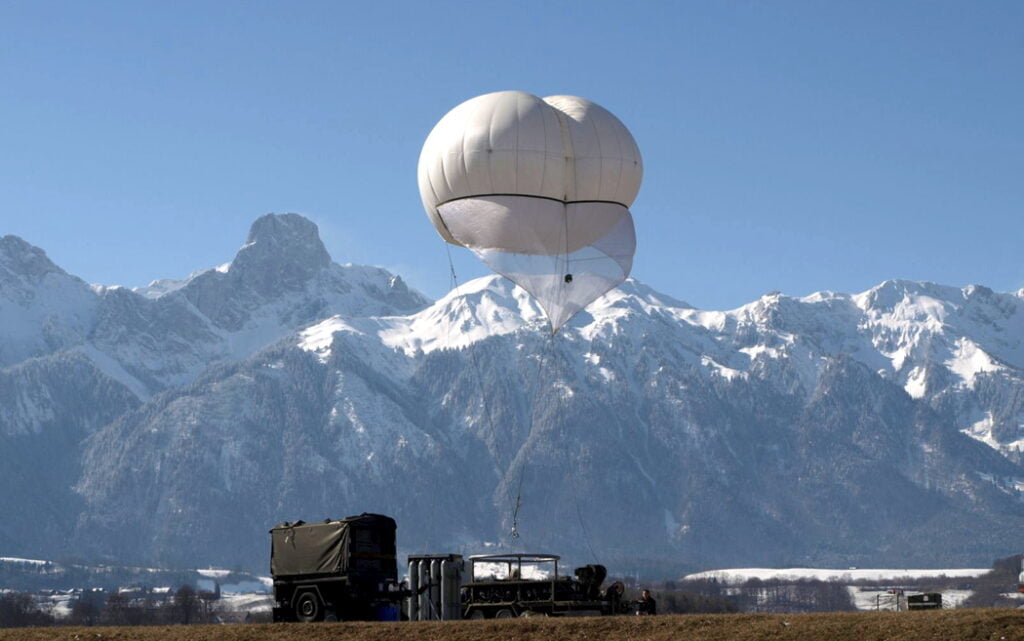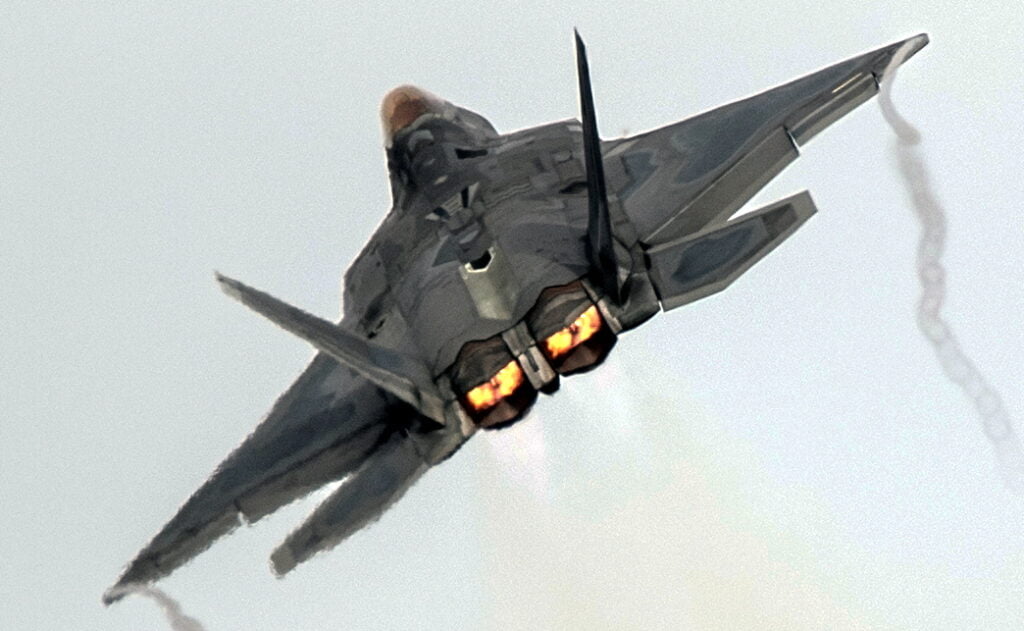The Chinese “spy balloon” that was shot down by a US fighter jet was cheap, unsophisticated, and posed little or no threat, says an Israeli expert.
Its arrival high over the Midwest at the end of January sparked days of fevered speculation about what it was – and led to a near meltdown between Washington and Beijing.
But there’s little to suggest it was actually sent on an intelligence mission, according to Rami Shmueli, CEO of the video surveillance security company RT.
It’s more likely, he says that it was just a “poke in the eye”, designed as an insult rather than to cause actual harm.

“The biggest reason for them to do it is to push a finger into the USA’s eyes, to tell them you don’t mess with us, we don’t mess with you.”
His company designs and makes aerostats – helium-filled balloons that carry military and civilian payloads for intelligence, surveillance, reconnaissance, and communications. They are tethered to the ground and go no higher than 1,500 meters.
Stratospheric balloons, like the “Chinese spy balloon”, fly much higher, typically up to 38,000 meters (almost 24 miles). An estimated 1,000 weather balloons are launched every day.
They’re often described as the poor man’s satellite, an affordable way of getting cameras and other equipment to a great height, but with no way to control their movement.
Shmueli, who headed the IDF aerostats department before founding his company in 1996, has seen video showing what remains of the downed balloon.

He says it looks like a low-tech device, costing no more than a few hundred dollars.
“It’s easy to find a website where you can buy a stratospheric balloon for $200 or $300, maximum $2,000,” he says.
“They’re mainly for weather research. I’m not sure what intelligence you’d get from them that you couldn’t get from other sources.
“There were solar panels on the balloon and there were systems there that needed power. I’m almost positive those balloons will link to the Chinese satellites to send all the data back home.”
But he finds it hard to believe it was part of an intelligence mission.
“I really believe it’s not the right way to carry out a secret intelligence mission. The balloon is very big, it’s easy to detect, it’s not controlled.

“You’d have to send over many balloons because most of them wouldn’t succeed. That’s why they found balloons over the North Pole in Canada or South America. Something went wrong, and they were blown off-course.
“When I heard President Biden congratulating the great pilots on hitting the balloon, I thought to myself, PR is more important than their real mission.
Sign up for our free weekly newsletter
Subscribe“How difficult is it for a pilot flying an F22 to hit a giant balloon that’s so big and flying so slowly? But for the PR, it’s very good.”
The 200ft-high balloon entered US airspace near Alaska on January 28th and was, the government said, “clearly for intelligence surveillance”. China insisted it was nothing more than a weather balloon that had drifted off course.

Whatever it was, it sparked a diplomatic dispute that saw Secretary of State Antony Blinken cancel a trip to China, aimed at patching up some of the countries’ many differences.
The balloon was eventually knocked out of the sky by a $400,000 AIM-9X Sidewinder missile, launched by a US Air Force F22 Raptor fighter jet.
China described the move as an over-reaction. Wang Yi, its highest-ranking diplomat, described the shooting down of the balloon, and three other unidentified flying objects, as “absurd and hysterical”.
Shmueli believes the Chinese wanted the Americans to get nervous.
“I believe the Chinese when they say you (the Americans) started doing all kinds of things on our territory, so we’re doing the same on yours.
“Maybe it’s revenge and American balloons were flying over China. The Chinese are so secretive you never know if something happened there.”
“You can see on the video it’s a latex balloon, made of a very, very, very low cost material.”
He explained that the balloon would be far larger floating at 50,000ft or 60,000ft than on the ground. Atmospheric pressure would increase its size by six or seven times, he said.
Balloons were first used for aerial reconnaissance by France during the Napoleonic Wars between 1799 and 1815.
The same principles are applied today – lighter-than-air gas is used to lift the balloon. But today they are unmanned, and carry highly sophisticated technology.
RT provided aerostats crowd control and management at the 2020 Olympic Games in Tokyo, the 2022 World Cup in Brazil, Pope Francis’s visit to Africa in 2015, world leaders gathering at the funeral of the late Israeli president Shimon Peres in 2016 and many other events.

Using technology developed by Israel Aerospace Industries it will soon be able, using a triangle of aerostats, to detect humans buried under five meters concrete (the Turkey earthquake, for example) from a cell phone signal.
RT aerostats can carry super-powerful cameras which, at an altitude of 500 meters, can see a person from 15km away.
Tethered aerostats have some advantages over drones. They can stay up for four days – rather than just 40 minutes for drones – can carry heavier payloads and reach higher altitudes. But they’re not a replacement for drones, because they’re static.
Related posts

Editors’ & Readers’ Choice: 10 Favorite NoCamels Articles

Forward Facing: What Does The Future Hold For Israeli High-Tech?

Impact Innovation: Israeli Startups That Could Shape Our Future




Facebook comments